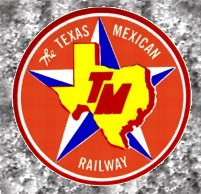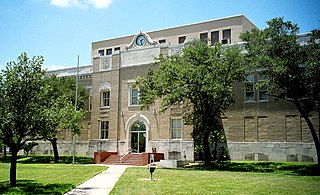
San Patricio County is a county in the U.S. state of Texas. As of the 2010 census, the population was 64,804. Its county seat is Sinton.

Nueces County is a county in the U.S. state of Texas. As of the 2010 census, the population was 340,223. The county seat is Corpus Christi. The county was formed in 1846 from portions of San Patricio County and organized the following year. It is named for the Nueces River, which flows through the county.

The Nueces River is a river in the U.S. state of Texas, about 315 miles (507 km) long. It drains a region in central and southern Texas southeastward into the Gulf of Mexico. It is the southernmost major river in Texas northeast of the Rio Grande. Nueces is Spanish for nuts; early settlers named the river after the numerous pecan trees along its banks.
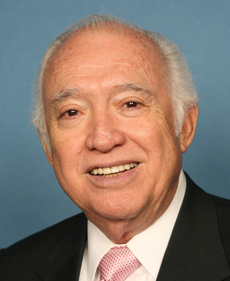
Solomon Porfirio Ortiz is the former U.S. Representative for Texas's 27th congressional district, based in Corpus Christi, serving from 1983 until 2011. He is a member of the Democratic Party. In 2010, Ortiz was defeated by Republican challenger Blake Farenthold. Ortiz's son, Solomon Ortiz, Jr., is a former state Representative.

South Texas is a region of the U.S. state of Texas that lies roughly south of—and sometimes including—San Antonio. The southern and western boundary is the Rio Grande, and to the east it is the Gulf of Mexico. The population of this region is about 4.96 million according to the 2017 census estimates. The southern portion of this region is often referred to as the Rio Grande Valley. The eastern portion along the Gulf of Mexico is also referred to as the Coastal Bend.

The Nueces Hotel in Corpus Christi, Texas, was a luxury hotel that also served the city as a center of social and political life during the early 20th century and was for years the largest building in Texas south of San Antonio.
The Texas Coastal Bend, or just the Coastal Bend, is a geographical region in the US state of Texas. The name refers to the area being a curve along the coast of the Gulf of Mexico. The largest city of the Coastal Bend is Corpus Christi. It includes part of Laguna Madre and North Padre Island, as well as Mustang Island.

Corpus Christi Bay is a scenic semi-tropical bay on the Texas coast found in San Patricio and Nueces counties, next to the major city of Corpus Christi. It is separated from the Gulf of Mexico by Mustang Island, and is fed by the Nueces River and Oso Creek from its western and southern extensions, Nueces Bay and Oso Bay. The bay is located approximately 136 miles (219 km) south of San Antonio, and 179 miles (288 km) southwest of Houston.
Lake Corpus Christi is a reservoir in coastal southern Texas. The lake was created by impoundment of the Nueces River by the Wesley E. Seale Dam opened in 1958. The lake and the dam that creates it are managed by the City of Corpus Christi. Lake Corpus Christi was originally known as Lake Lovenskiold. It is often referred to as Lake Mathis because of its location.
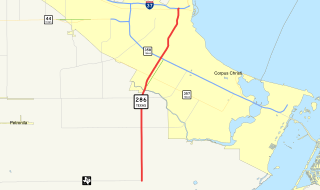
State Highway 286 or SH 286 is a Texas state highway running from downtown Corpus Christi south to Chapman Ranch. The route was designated on its current route in 1939. Before 1939, this route was known as SH 96, and was proposed to be extended to the southwest to Riviera. It is also locally known as the "Crosstown Expressway"

State Highway 357 or SH 357 is a Texas state highway that runs along the southwestern end of Corpus Christi. The route was originally designated as FM 692 on June 4, 1946. On September 5, 1946, it was redesignated to SH 357.

State Highway 358 or SH 358 is a Texas state highway that runs along the southern edge of Corpus Christi. The access road for Highway 358 is known as SPID. The official division is FM 665.
Old Bayview Cemetery is a cemetery located on a small hill in downtown Corpus Christi, Texas on Ramirez St. at Padre St., bordered by the I-37 access road. It is the oldest federal military cemetery in Texas. Owned by the City of Corpus Christi, it presently comprises three and a half acres as a Historic Texas Cemetery and a State Archaeological Landmark of the Texas Historical Commission.
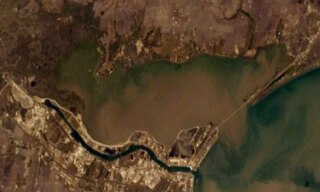
Nueces Bay is a northwestern extension of Corpus Christi Bay in the San Patricio and Nueces counties of Texas. The bay is fed by the Nueces River, forming a natural estuary, which renders it ecologically and economically vital to the surrounding area. It serves as a habitat for the propagation of fish and shellfish, which sustain diverse species of birds and other wildlife. The bay is threatened by pollution from the heavy industry on its southern shore, which prevents oyster farming. Petrochemical production and oil are important to the surrounding economies of the major settlements of Corpus Christi and Portland, found on the eastern shore and connected by the Nueces Bay Causeway at the bay's confluence with Corpus Christi Bay.
Hilda G. Tagle is a Senior United States District Judge of the United States District Court for the Southern District of Texas.

Corpus Christi is a coastal city in the South Texas region of the U.S. state of Texas. The county seat of Nueces County, it also extends into Aransas, Kleberg, and San Patricio counties. The population was 277,454 at the 2000 census; in 2006 the U.S. Census Bureau estimated the city's population at 285,175, making it the eighth-largest city in the state. It is the principal city of the three-county Corpus Christi Metropolitan Statistical Area as well as the larger Corpus Christi-Kingsville Combined Statistical Area. The translation from Latin of the city's name is Body of Christ, given to the settlement by the Spanish, in honor of the Blessed Sacrament (Eucharist). The city has been nicknamed The Sparkling City by the Sea, or "Corpitos" particularly in literature promoting tourism.
Port of Corpus Christi is the fourth-largest port in the United States in total tonnage. Port Corpus Christi is located on Corpus Christi Bay in the western Gulf of Mexico, with a straight 45-foot-deep (14 m) channel. The port is located close to downtown Corpus Christi in Nueces County, Texas, but the port is not part of the city or the county. Port Corpus Christi operates without receiving any city, county, or state tax dollars. It is governed by an unpaid board of seven citizens, three of whom are appointed by the Nueces County Commissioners Court, one by the San Patricio County Commissioners Court, and three by the Corpus Christi City Council. Port Corpus Christi handles over 6,000 vessels and over 80 million tons of cargo annually. Environmental initiatives are handled through the port's Environmental Management System (EMS). To fight crime and terrorism, public safety at Port Corpus Christi is handled by the Port Corpus Christi Police Department and its state-of-the-art security center.
The San Antonio, Uvalde and Gulf Railroad was a South Texas railroad company in the first half of the 20th century that linked San Antonio with Corpus Christi, Texas. Chartered in 1909 as the Crystal City and Uvalde Railroad, it was renamed in 1912. Because of its unusual abbreviation, the SAU&G, the railroad was for years thereafter popularly called "The Sausage".
The following is a timeline of the history of the city of Corpus Christi, Texas, USA.

